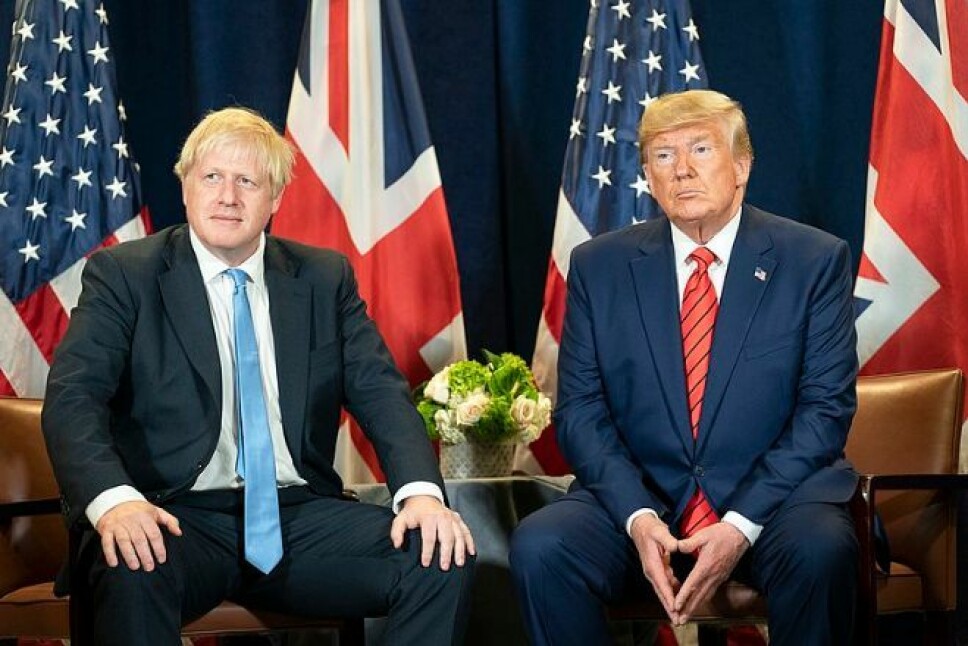
Right Now!

Far Right Politics Has Changed. So Should We!
As far right politics is becoming an ever bigger part of mainstream politics, opponents and scholars of the far right have to leave their 20th century thinking behind and critically review their received wisdom. What might have been true in the 1990s, might no longer be true today. Taboos have been broken, preferences have shifted, and the broader political context has become much more accepting to far right politics and politicians.
In many ways, 2020 is going to be 2016 Redux, dominated again, at least in Europe, by Brexit and Trump.
At the beginning of the year, namely on January 31, the United Kingdom will officially “leave” the European Union, even though it will spend the rest of the year, and likely longer, figuring out the details of how exactly to do that.
At the end of the year, on November 3, to be exact, impeached US president Donald Trump will face re-election against a yet unknown Democratic challenger.
Everything in between will be secondary, barring major environmental destruction, terrorist attacks, or global war – and who, but a complete fool, would rule these options out completely?
Although Brexit and Trump have become synonymous to “populism” and the “far right”, particularly in the Anglosaxon media, they relate somewhat awkwardly to them.
At the same time, they are both perfect examples of what I call “the fourth wave” of postwar far right politics in my new book The Far Right Today, which is characterized by the mainstreaming and normalization of far right politics.
Both are perfect blends of mainstream and far right forces and politics, of elitism and populism, insider and outsider, creating a hybrid “nativist conservatism” that challenges liberal democracies in fundamental ways.
It is this “nativist conservatism” that has become the dominant phenomenon within the fourth wave of far right politics – to be clear, I am not suggesting a new academic term here, as I believe that most of these actors are (populist) radical right.
Conservatives-turned-far right are governing in Brazil, Hungary, Israel, Poland, and the US, to name but the most important countries.
Because of their ideological and personal relations to the (former) political mainstream, these parties are much less ostracized by the (former) cultural, economic, media, and political establishments.
In fact, in many cases these establishments have played a major role in their success – most notably the media (for instance, in Brazil and the US).
Moreover, while they do employ populist rhetoric – who doesn’t, these days – they often also emphasize their establishment credentials – even if it is more a connection to a previous establishment, which has been allegedly corrupted by “liberals” and “social justice warriors” (after all, it is “Making America Great Again”).
It has always been a myth that far right or populist parties implode in power.
Parties like the Danish People’s Party or the Italian Northern League did quite well in government, or supporting minority governments.
But the “nativist conservatives” are actually in power, often by themselves or with minor coalition partners. And they are able to remain in power because of a much more complex set of policies and sentiments than is acknowledged in most literature.
In Hungary and Poland, for example, state subsidies – grounded in radical right ideology but offered to show how good the government takes care of “its people” – have played a major role in the re-election of both Fidesz and PiS – manipulation of state media, and in Hungary the electoral process, played a role too.
In the US, anti-abortion Supreme Court judges as well as tax breaks and a soaring stock market are much more important to Trump’s re-election (chances) than his “Muslim Ban” or (not really materializing) “Wall.”
This all provides fundamental challenges to both academic scholars and political opponents of the far right, who still mainly see the far right through the lens of the “Third Wave,” i.e. small, oppositional, outsider forces, almost single-mindedly focused on immigration and Muslims, which stand in complete ideological and political opposition to the broader political establishment.
They still believe that the support is primarily based on a “protest vote” by “losers of globalization,” lured by “political entrepreneurs” offering false promises and scapegoats.
But what about the many voters who are not (or no longer) protesting? Who feel (finally) represented by the far right government? Who might not adhere to a far right ideology, but don’t mind supporting far right parties and politicians if they provide them with the policies they do care about?
As far right politics is becoming an ever bigger part of mainstream politics, opponents and scholars of the far right have to leave their 20th century thinking behind and critically review their received wisdom.
What might have been true in the 1990s, might no longer be true today. Taboos have been broken, preferences have shifted, and the broader political context has become much more accepting to far right politics and politicians.
We have to revisit our conceptualizations and, particularly, our classifications.
For example, why is the Norwegian Progress Party broadly considered to be part of the radical right, but the American and French Republicans not?
Why is rabid Islamophobia enough to be classified as far right in Western Europe, but not in Eastern Europe?
And what does membership in “mainstream right” transnational federations like the European People’s Party (EPP) or the European Conservatives and Reformists (ECR) still tell us about party ideology?
To better understand the far right today, and the “nativist conservatives” in particular, we have to see them as part of the broader establishment, a radicalization of the mainstream, and even that less and less.
We also have to start thinking about how to engage with the far right.
Do we treat far right governments, parties, politicians and states the same as a liberal democratic ones? Do we go to their conferences? Appear in their media? Debate them on television? Invite them to our events?
The answer to each of these questions will be different for each reader, but every one of us has to start thinking about them, as for many of us, living around the far right is a luxury we no longer have.
———
* Cas Mudde is the Stanley Wade Shelton UGAF Professor in the School of Public and International Affairs at the University of Georgia and a Professor II at the Center for Research on Extremism at the University of Oslo. His latest books include (with Cristóbal Rovira Kaltwasser) Populism: A Very Short Introduction (Oxford University Press, 2017), The Far Right in America (Routledge, 2018), and The Far Right Today (Polity, 2019).







